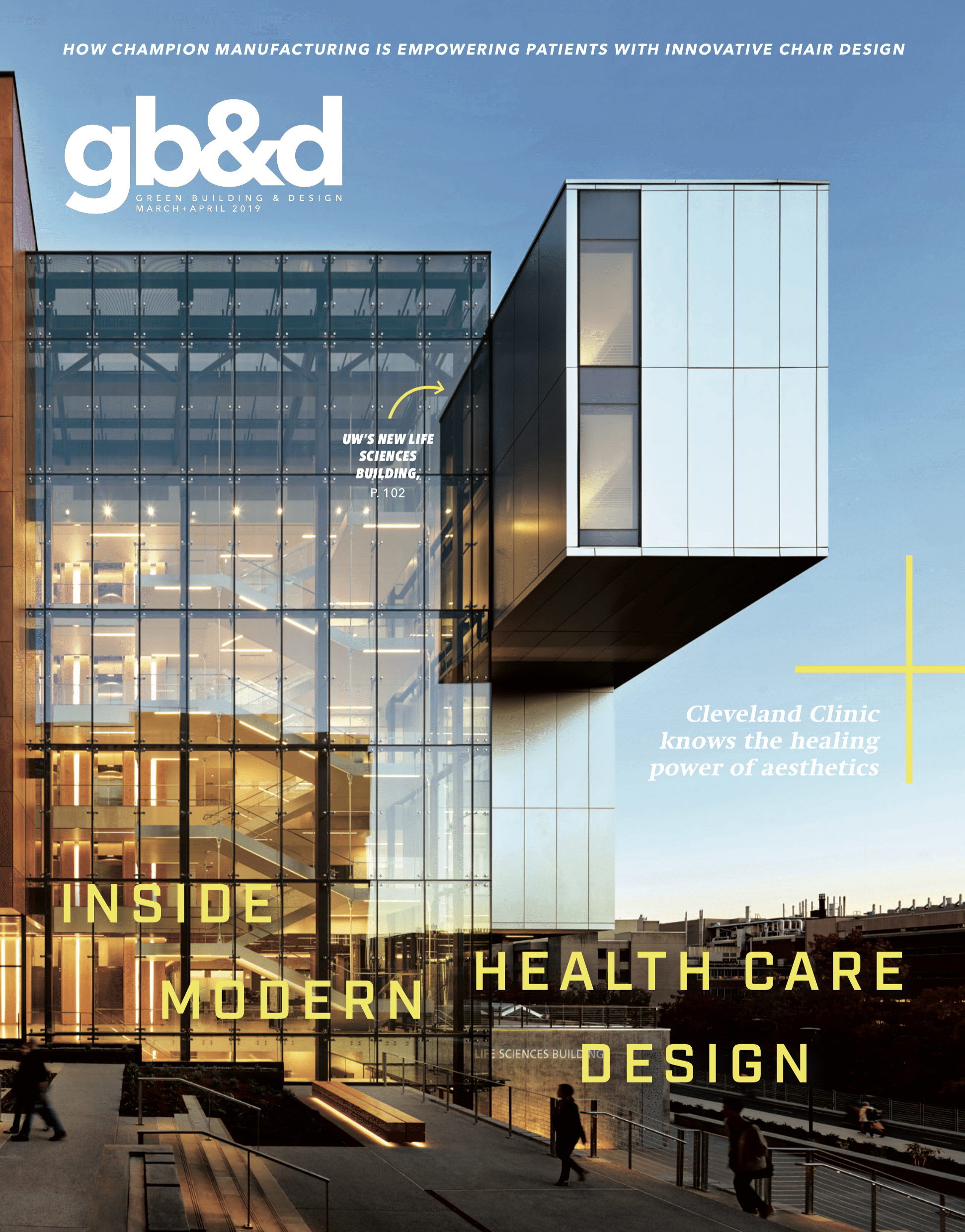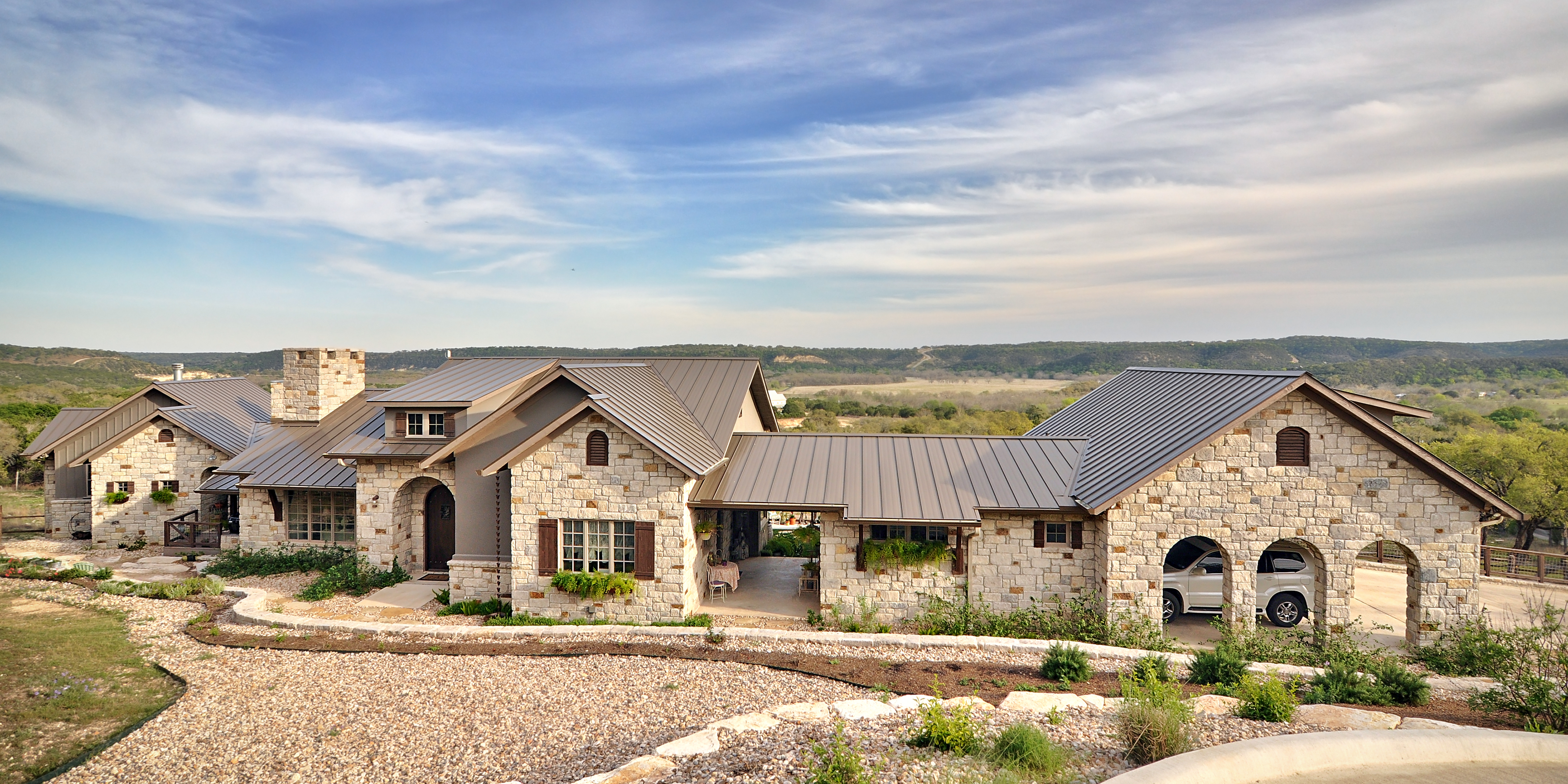
Metal roofs may last 40 to 60 years or even longer, as they never decompose. [Photo: Courtesy of Drexel Metals]
The pros at Drexel Metals share their extensive knowledge on why to spec metal roofs—and what to expect.
The demand for metal roofing is, well, through the roof. “Our business has grown double digits every year for the last eight years,” says Ken McLauchlan, director of sales for Drexel Metals, a Carlisle company and the industry’s leading provider of engineered metal roofing systems, equipment, and custom fabrication services.
Metal roofing has been on the rise in commercial and industrial applications of the roofing market for the last few years, according to Transparency Market Research. Through 2021, value demand for the already billion-dollar industry is expected to advance 2% annually, according to a 2017 study by Freedonia Group.
Why Spec Metal Roofing?
Long-Term Performance
You can expect a metal roof to last at least two to three times longer than a regular roof. Generally speaking, metal roofs may last 40 to 60 years or even longer, whereas roofs made of asphalt last for about 20 years, according to an NAHB study. While the upfront cost may be more, you’ll save in the long run, as you won’t be replacing your roof three, four, or even five times.
McLauchlan recalls one job in which he went out to speak to a couple about replacing their roof after decades of high performance. “I didn’t see anything wrong so I said, ‘What’s the problem?’ The wife said, ‘I don’t like the color. I want it to be blue,’” he laughs. “That’s a good problem. And that one was a little over 40 years old in Colorado.”
Because asphalt roofs are made of oil impregnated paper or fiberglass, they begin to deteriorate as soon as exposed to the elements, but metal roofs never decompose. In general, roofing materials like wood shingle, shake, and tile all experience varying degrees of weather-related problems that lead to breakdown. Wood shingle and shake roofs often need replacement before 20 years, while concrete tile roofs can crack and warp in the freeze/thaw cycle of more northern climates.
FROM OUR MAR+APR 2019 ISSUE
The preferred publication of leading green professionals.
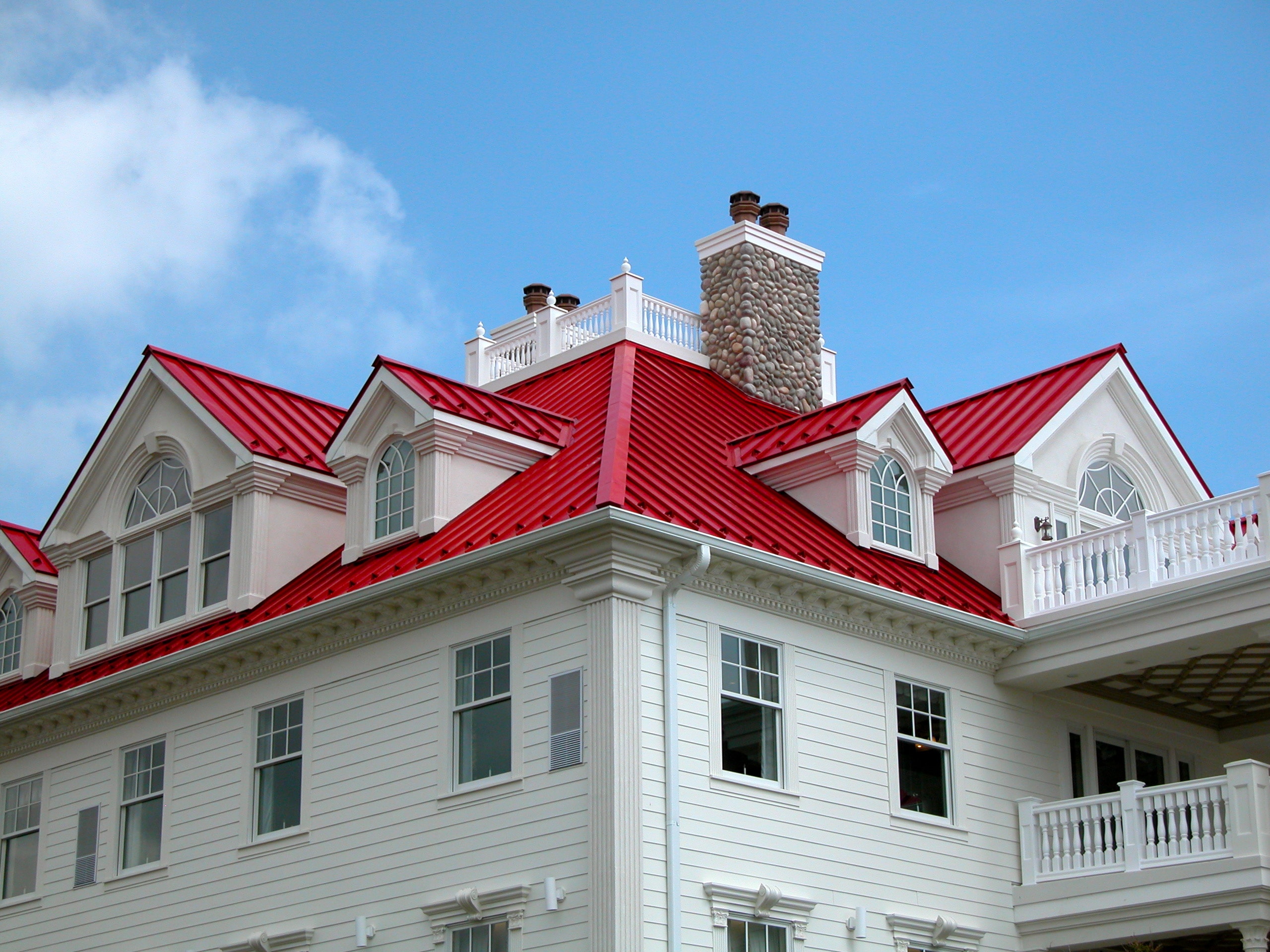
Drexel Metals roofing lasts up to three times longer than asphalt roofs. [Photo: Courtesy of Drexel Metals]
Durability & Safety
“Unfortunately we’ve had several opportunities lately to see what hurricanes will do,” McLauchlan says. Drexel Metals’ roofs passed the test during Hurricane Harvey in 2017. “We had a whole subdivision where we were replacing roofs because debris from other types of roof systems had blown into ours and damaged them, but they did not blow off.”
Drexel Metals roofs have been proven to endure wind speeds of up to 150 miles per hour. Of course, it’s important to note that not only a strong roof can save a building. “I don’t want to say metal is the only solution to make it last a hurricane. You have to have a good building, too,” McLauchlan says. In addition to high winds and hurricanes, metal roofing stands up to heavy snow, hailstorms, and even wildfires.
Drexel Metals’ roofs also require little to no maintenance and come with a 20-year weathertight warranty. A Gold Standard paint warranty was also added in 2012 and covers the total Drexel Metals system, from the roof deck up, as well as both materials and replacement labor if the installed Drexel Metals painted product ever were to fail.
Drexel Metals is one of few manufacturers who provides both factory and field fabrication of its products. Field fabrication produces a product that’s as good or better than one manufactured in the plant. When panel lengths are larger than 50 feet, you increase your chance of damage during shipping and rooftop staging. Site fabrication eliminates that risk and prevents excess waste, and Drexel can make panels up to 200 feet long onsite. All panels can be cut to exact field conditions and don’t require extensive crating. Site fabrication also allows for precise sizing of rake panels, ensuring a watertight condition. Perhaps most importantly, though, site fabrication eliminates end laps—the number one cause of metal roof leaks.

[Photo: Courtesy of Drexel Metals]
Snow Retention
Metal roofing sheds snow fast, protecting the roof’s structural integrity. It can also eliminate ice damming at the eaves, so water can’t back up and collect under the roof then leak into the building.
Drexel also uses premium Kynar 500 and Hylar 5000 (PVDF) paint systems so metal panels are coil-coated and oven-cured. “With Kynar paints, it becomes a snow shedding system,” McLauchlan says. Plus, it keeps the roof lightweight. It’s the only finish application method that can be warrantied against color fade for 30 years or more.
Accessories further protect your roof and building. S-5! ColorGard snow retention metal attachment solutions are easy to install on Drexel roofs and warranted for the roof’s life. Unlike other snow guards that yellow and fail over time, ColorGard is strong enough to prevent the dreaded rooftop avalanche while maintaining the roof’s color. ColorGard is designed and engineered on a site-specific basis, so your house or building gets exactly what it needs. Installation is easy, and you don’t have to penetrate the surface.
ColorGard is mechanically attached with S-5! Clamps, which have round-point setscrews that grip the seam securely without damaging the panel’s protective finishes. The clamps are precision-machined from aircraft quality, high tensile aluminum—not cast or plastic. All related hardware is non-ferrous stainless steel for lasting performance. “The big issue in our industry is making sure the attachment doesn’t void the warranty,” McLauchlan says. “The engineering is a huge part—the attachment and how it’s done so it’s not sacrificial to the roof is key.”
If needed, you can also easily implement accessories like the S-5! WindClamp to increase roof system wind uplift performance. The WindClamp can double wind resistance by preventing multiple modes of failure.

[Photo: Courtesy of Drexel Metals]
Energy Efficiency
Metal is among the most energy-efficient roofing materials out there and can save you up to 40% in air conditioning costs while providing significant insulation in colder months, according to the Metal Roofing Alliance. Drexel Metals roofing helps to reduce trapped heat in the summer and prevents energy loss during winter. A variety of finishes also add up to energy savings, as reflective pigments reduce cooling costs. The Metal Roofing Alliance says even a basic, unpainted metal roof reflects more solar radiation than an asphalt roof, which typically absorbs and holds heat. As for structures in warmer places, pre-painted or granular coated metal roofing systems not only reflect solar energy but cool the building by re-emitting most of what solar radiation is absorbed. A highly reflective and highly emissive painted or granular-coated metal roof can re-emit up to 90% of absorbed solar radiation, according to the alliance. The Passive House Institute gives metal roofing a thumbs up due to both its solar reflectance and thermal emittance, making it ideal for net-zero energy houses.
Drexel’s roofs can also help you achieve LEED points. “Metal roofing can play an important contributing part in achieving requirements for LEED credits,” McLauchlan says, citing points like reflectivity, building reuse, construction waste, material reuse, recycled content, on-site renewable energy, and rain harvesting. For painted products, customers are eligible for a $500 tax credit for making their house energy-efficient.
Attaching solar to a Drexel metal roof is also easy with the S-5-PV Kit Solar Attachment. Adding solar just makes good sense, as a standing seam metal roof has a life expectancy similar to that of PV modules. A 30-year power source on a 40-year roof, along with S-5’s zero-penetration technology, creates the most sustainable roof system available combined with alternative power generation.
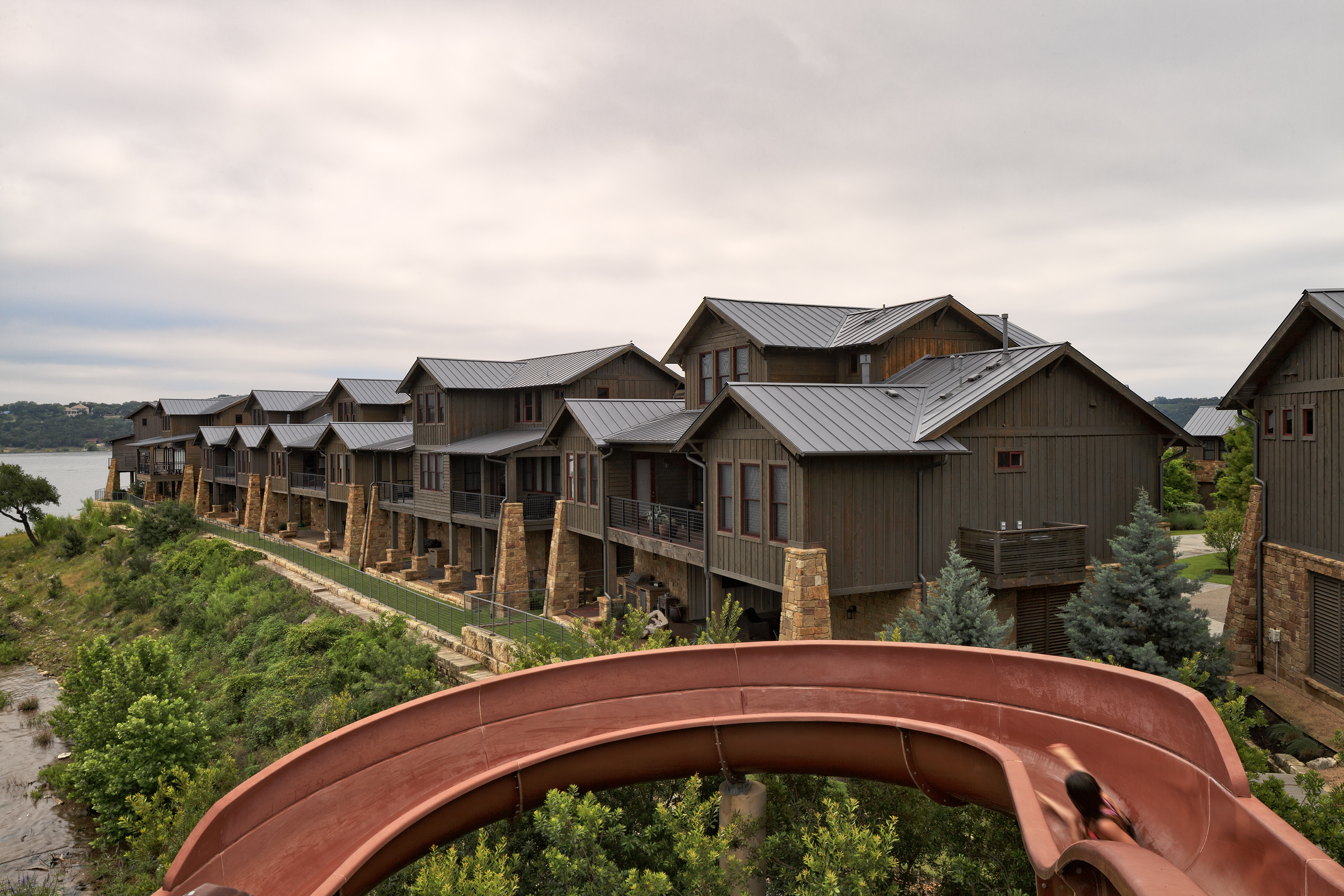
[Photo: Courtesy of Drexel Metals]
Why Do Architects Love Metal Roofs?
Color
A plethora of colors is a key reason architects increasingly turn to Drexel Metals, whether they’re designing a school that demands an orange roof or matching metal panels for a house to a homeowner’s beloved car.
“From a contractor’s side, when I was roofing and doing high-end residential homes, I didn’t realize how big of a contributing factor color was,” McLauchlan says. “I’ve done custom colors—something Drexel Metals is very capable of doing—to match everything from colors of rocks to the color of a granddaughter’s eyes. If you can provide something for us to match, for a very nominal amount we can get that color on a chip for you to approve.” You can even print a picture if you want—like wood grain on a historic barn, for example.
Sherwin-Williams is a major Drexel Metals partner, and they guarantee your color and coatings alongside Drexel. “It’s never been the customer’s responsibility,” McLauchlan says.
In addition to choosing from 28 standard colors and six premium colors, you can peruse 11 low-gloss options for metal roofing on residential homes. If that’s not enough, Drexel and Sherwin-Williams will work with you to come up with a custom solution.
Finishes
Finishes are also where metal roofs shine. Imagine you want your roof to have a “rusty” appearance, for example. While other raw materials may give the appearance of rust, you’ll also have the side effects of runoff and staining. But Drexel Metals can duplicate that look without the drawbacks.
Drexel Metals paint finishes include:
Fluropon Finish
Standard paint colors produced by Sherwin-Williams with a minimum of 70% PVDF (Kynar 500 and Hylar 5000) base resin with ceramic pigments. All colors are formulated to ensure consistent appearance and quality. The Fluropon system is applied over Sherwin-Williams polyester primer in a minimum thickness of 0.2-mil and can be applied to Galvalume HD galvanized or aluminum substrates. All topcoats are a minimum of 0.8-mil of the Fluropon color choice. The reverse side is primer and a washcoat of 0.5-mil total dry film thickness.
DrexlumeTM
Mill-finished Galvalume (carbon steel sheet coated with aluminum-zinc alloy by a continuous hot-dip process) with a two-sided, clear acrylic finish that simultaneously aids roll forming without using lubricants and eliminates handprints or stains from handling and storage. The acrylic finish dissolves naturally over time, and when left as is, allows for natural, even weathering.

Not everyone has the same needs. Drexel Metals offers more than a dozen diverse profiles.
Design Flexibility
Beyond color, metal roofing allows for utmost design flexibility. McLauchlan says he often hears from architects that metal roofs allow them to add character to their projects long-term. They say the amount of support they get in designing these buildings is tremendous, too. “One of the architects in Aspen said to me, ‘I have to spec 27,000 items. I want to have an expert to help me so when I have a problem, I know there’s somebody standing there with me.’ They see the benefit and how we can use metal to design specifically to the needs of the project and still have the artistic flair architects love.”
You can do a lot with metal roofs in part because they’re lightweight. On average a metal roof is 50% lighter than an asphalt shingle roof and 75% lighter than concrete tile, fiber cement shakes, and slate. “Asphalt products are typically eight to 10 times heavier per square foot.” That said, metal roofs can still hold serious weight and stand up to the test in a blizzard or even hurricane. Load spans and engineering reports and test certifications can be verified by registered engineers.
From contemporary design to historic reproduction, Drexel Metals has a full line of tooling to produce shapes to precise specifications. An ample selection of prefabricated dentils, finals, and corners also provide easy installation for enhanced visual appeal.
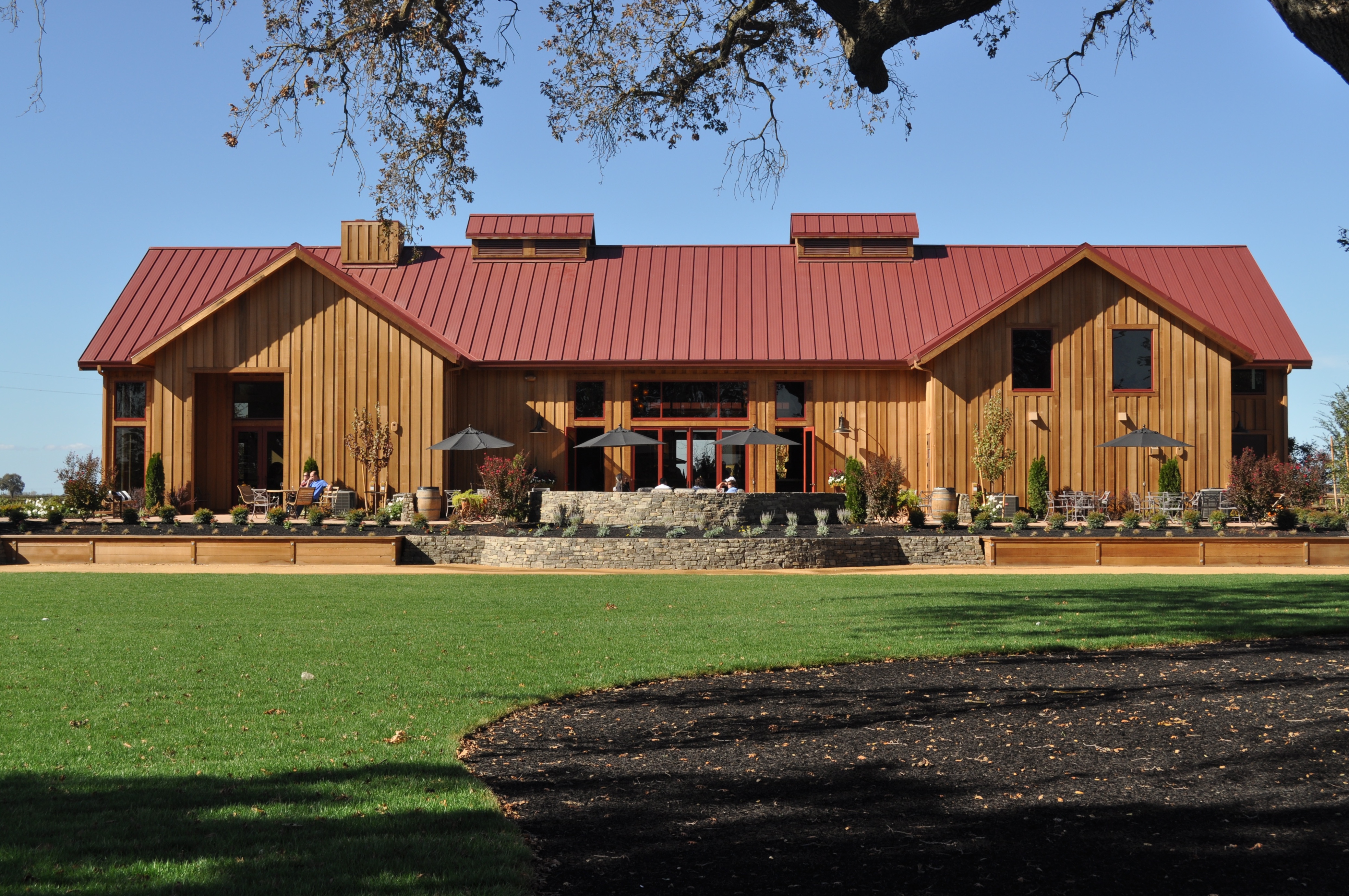
[Photo: Courtesy of Drexel Metals]
Diverse Profiles
Drexel Metals focuses on architectural and structural panel systems. While most people may look at a metal roof and think, “If you’ve seen one, you’ve seen them all,” that couldn’t be further from the truth, as a metal roof in Florida has different needs than one in Iowa, for instance. More traditional roof systems use a mechanical system with a tool to close the seam, while more modern roof profiles use a snap seam that eliminates the extra step. Traditionally, roof systems were more mechanical, but the increased demand has also meant evolving to find ways to make the process more contractor-friendly and panels easier to assemble.
DMC 150SS Roof System
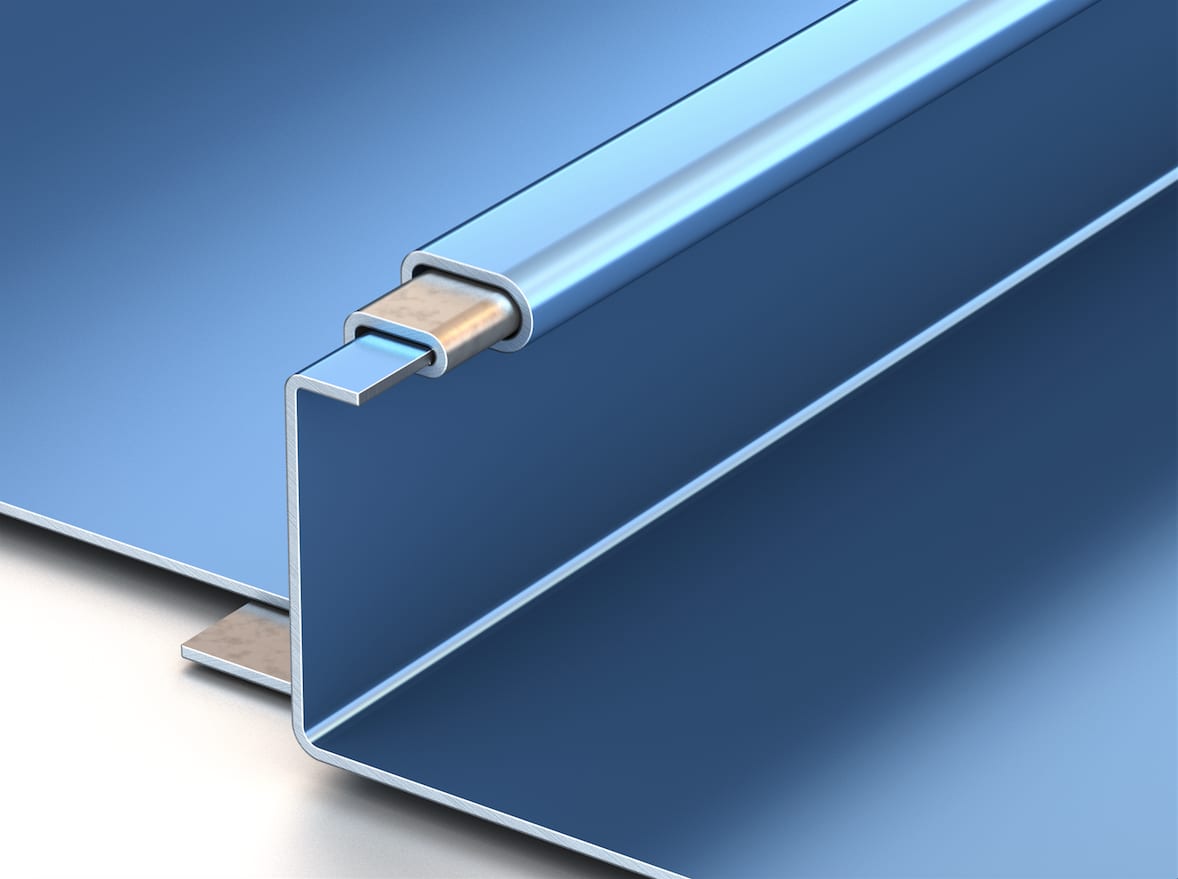
[Photo: Courtesy of Drexel Metals]
This profile is ideal for commercial, residential, and even historical applications as it lends striking dimension to any design. The versatile 1-1/2” mechanically seamed panel can be curved to a wide range of radiuses and applications—from barrel roofs to conical shapes. Concealed fasteners and a floating clip system reduce the effect of thermal stresses on the panels, helping to maintain a beautifully smooth, uniform appearance despite temperature fluctuations. It can be installed over steel decking with PolyIso or plywood decking and Drexel Metals MetShield underlayment.
DMC 150SL Roof System
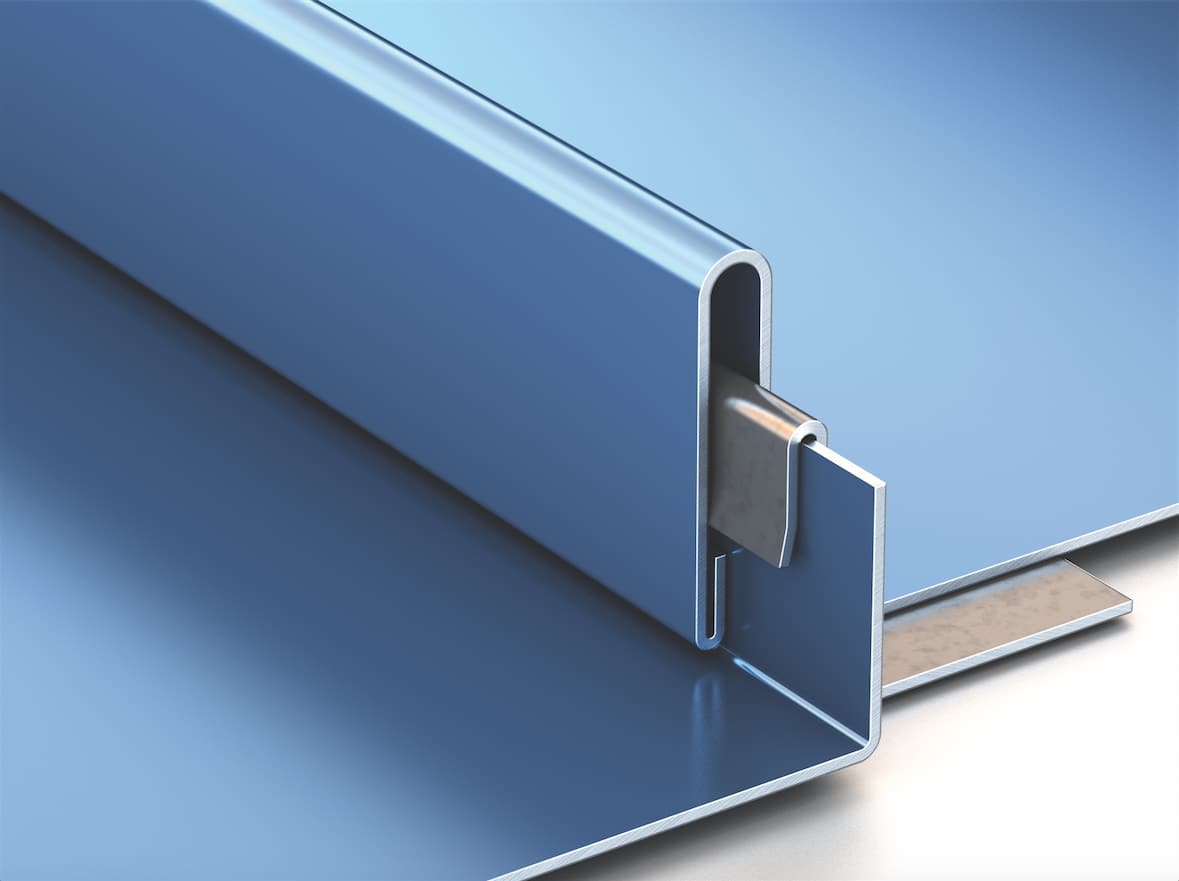
[Photo: Courtesy of Drexel Metals]
Great for both commercial and residential projects, this system’s 1-1/2” Snap Lock profile and DMC 150SL Clip create a continuous interlocking system that installs quickly, reducing labor costs. The concealed fastener and clip application also allow thermal expansion and contraction movement to help keep the beautiful finish straight and true. Install it over plywood decking and Drexel Metals MetShield® underlayment.
DMC 100NS Roof System
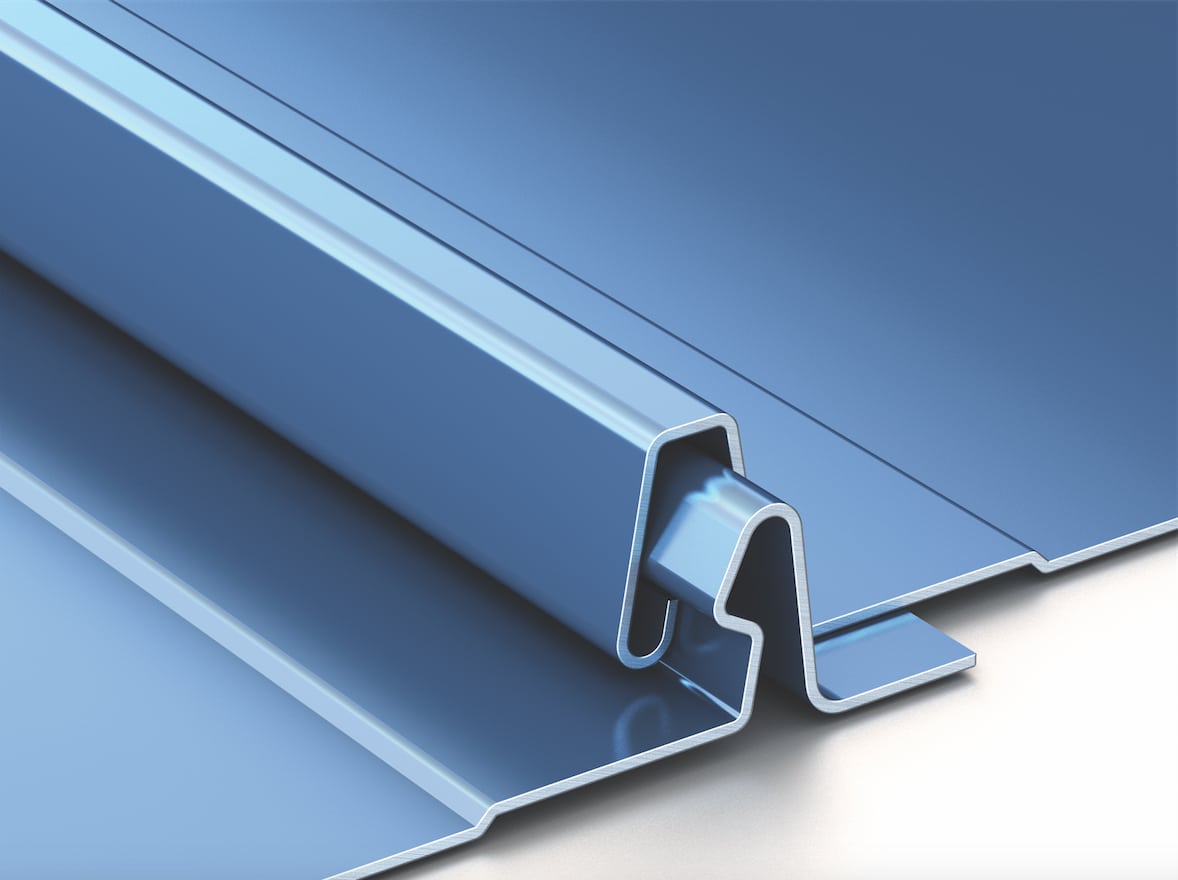
[Photo: Courtesy of Drexel Metals]
This profile is perfect for any residence considering its sleek appearance and attractive shadow lines. You won’t need metal roof clips with this profile either, as the concealed 1” self-locking Snap Lock system creates a powerfully protective seal. It’s easy to install, durable, and can be installed over plywood decking and Drexel Metals MetShield underlayment.
Why Do Contractors Love Metal Roofs?
“It’s their ability to differentiate themselves,” McLauchlan says. “Everybody else walks in and puts on shingles from their truck.” But Drexel Metals is selling a solution rather than a future problem—they offer roofing that’s built to last.
Contractors love metal roofs because they can get panels on demand and don’t have to worry about every last detail. McLauchlan has been in the industry for nearly 30 years, both on the contractor’s and manufacturer’s side, and says the growth spans residential and commercial, including many commercial contractors seeking metal roofing for the first time. “There’s a lot of people who have left traditional roofing, like asphalt, and moved into metal exclusively,” he says. He attributes that in part to the inherent expertise required in metal roofing coupled with not having to fight for the lowest bid. “Metal roofing is more of a craft,” he says.
For more than 30 years, Drexel Metals has been providing not only the highest-quality fabricated metal roofing systems, but also industry-leading support. “Drexel Metals’ model has really been based on technical support for the contractor,” McLauchlan says, adding that contractors, like himself, are “really good at roofing but horrible at the rest of it.” That’s where Drexel’s experts come in—offering unbeatable support on everything from technical questions to sustainability points.
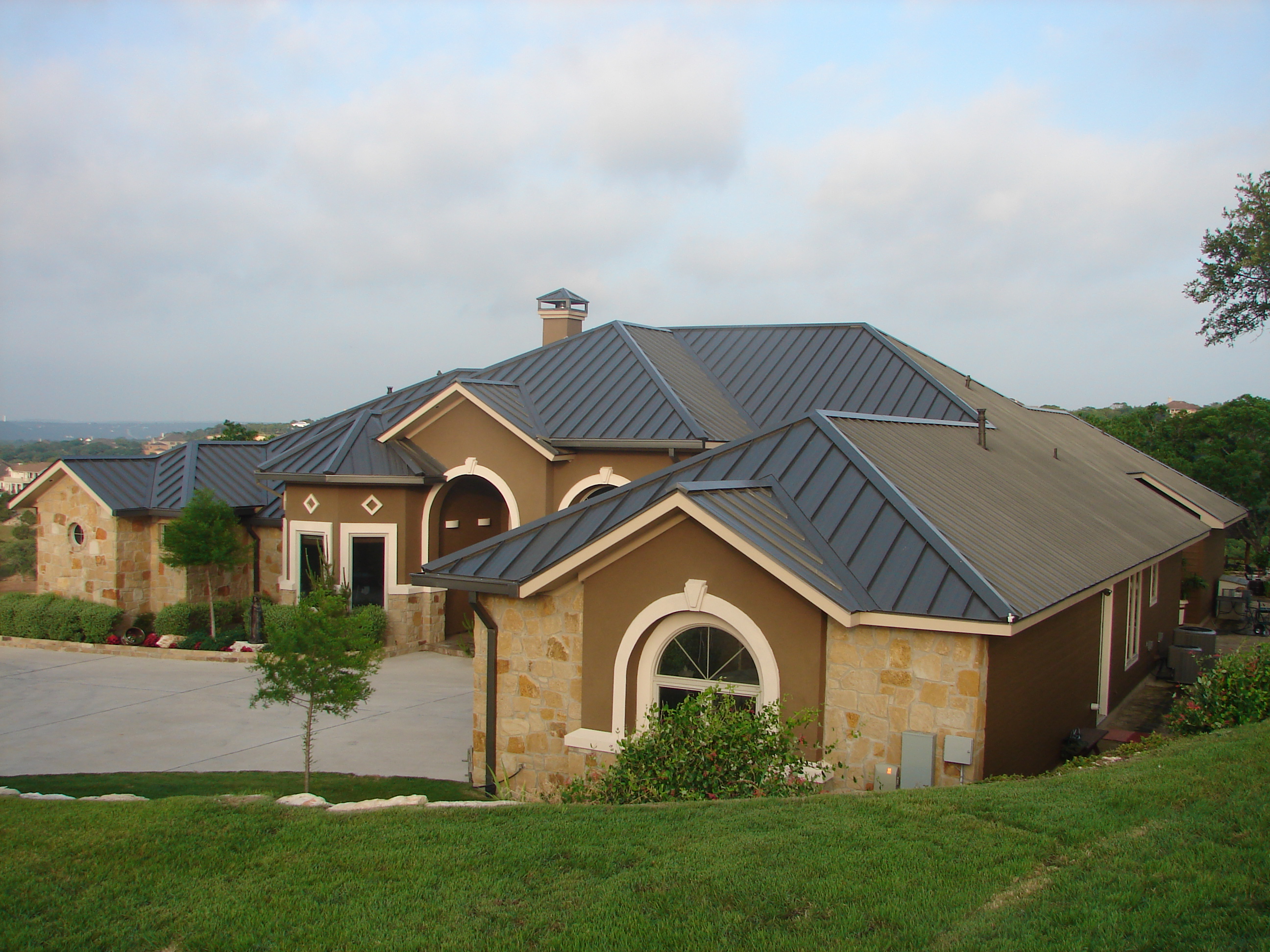
More and more commercial contractors are incorporating metal roofs for the first time. [Photo: Courtesy of Drexel Metals]
About Drexel Metals
Since 1985, Drexel Metals has provided a full range of superior-quality engineered metal roofing systems, equipment, and custom fabrication services for commercial, governmental, industrial, historical, and architectural customers all over the world. Headquartered in Louisville, the company operates multiple sales, fabrication, and distribution locations in addition to its extended family of Regional Manufacturers (DM-ARM) network of authorized fabricators and certified contractors who further market Drexel Metals’ proven-brand products—all fully backed and site certified by Drexel Metals’ industry-leading warranty programs.
Drexel Metals is part of Carlisle Construction Carlisle (CCM). Construction Materials LLC (CCM) is a diversified manufacturer and supplier of premium building products and related technologies for the commercial and residential construction markets. Carlisle has been a recognized leader in the roofing industry for nearly half a century, offering high-performance, single-ply roofing solutions that include EPDM, TPO, PVC, metal roofing, and roof garden systems. Carlisle also offers a full line of polyiso and expanded polystyrene insulation as well as a host of steep slope underlayments, duct sealants, adhesives, and hardware. In addition to roofing, Carlisle services the waterproofing, framing, and general construction industries.
Every Carlisle company offers sustainable, eco-friendly products that help reduce a building’s carbon footprint and often minimize its energy consumption and costs. CCM is a $2+ billion division of Carlisle Companies (NYSE:CSL). It employs more than 2,400 people and operates 26 plants in North America and five in Europe.
Drexel Metals itself is committed to eco-friendly packaging, freight consolidation, local manufacturing, and minimal waste and is an ENERGY STAR partner. The company uses recycled materials for many roofing components, which are 100% recyclable at the end of their life. The recycled content of the steel in a metal roof is about 56% from production to installation to reuse—far exceeding that of asphalt. In fact, 20 billion pounds of asphalt shingles go into U.S. landfills every year, according to the National Association of Homebuilders Research Center.
Energy conservation is inherent in product design and application at Drexel, including ventilation systems that reduce trapped heat in the summer and help prevent energy loss during cold winter months. Drexel Metals also utilizes reflective pigments to reduce cooling costs and offer photovoltaic roof systems that capture usable solar and heat energy.

